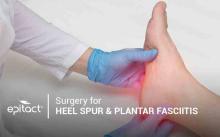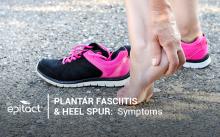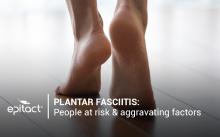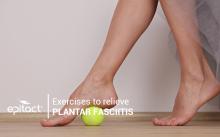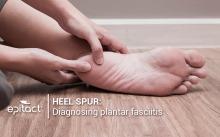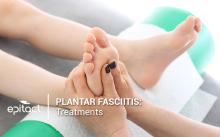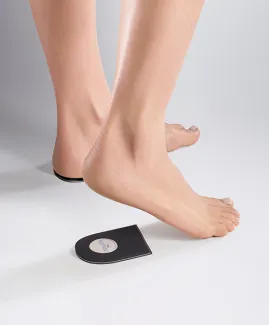
Heel spur/plantar fasciitis
Heel support for relieving heel pain caused by a calcaneal spur or plantar fasciitis.

Free Shipping 
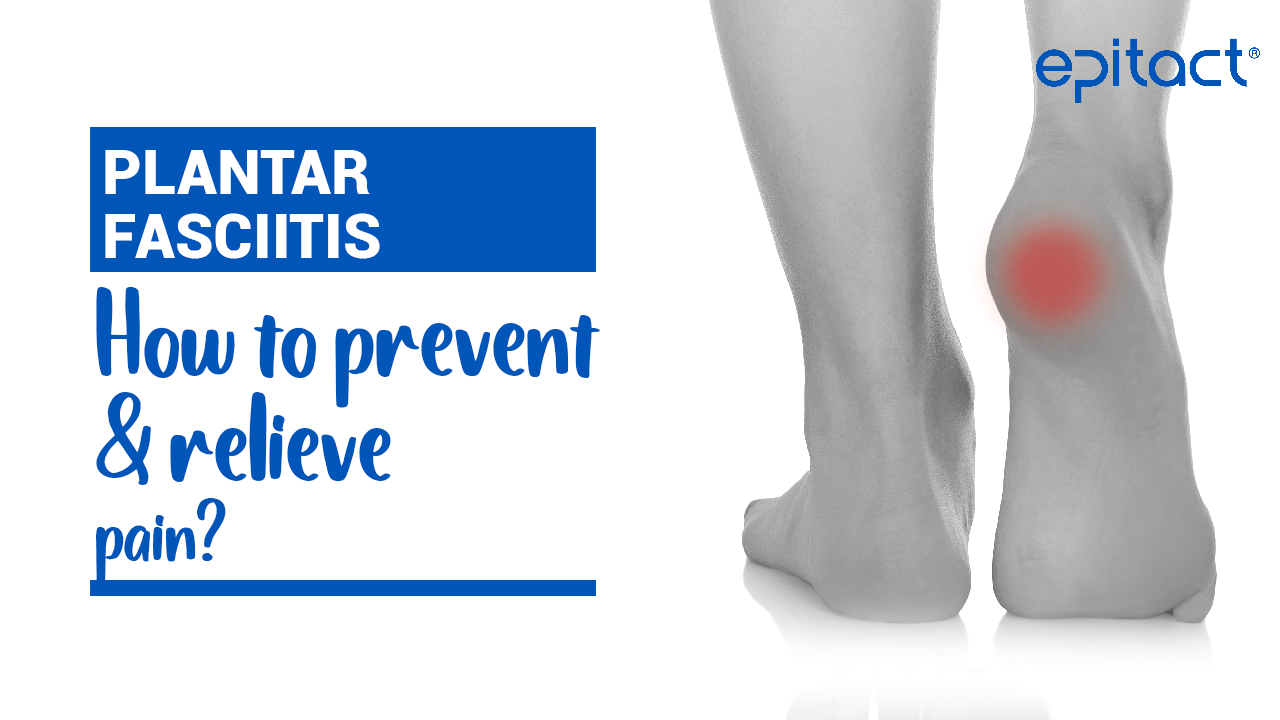
What is a heel spur and plantar fasciitis?
A heel spur is a bony-like outgrowth (a calcium deposit) that forms underneath the heel bone (calcaneum) between the heel and the arch of the foot.
Heel spurs, also called calcaneal spurs or bone spurs, are often confused with a condition called plantar fasciitis but they are different, even if their symptoms, causes and treatments are usually the same.
Plantar fasciitis is the inflammation of the fibrous tissue (called the plantar fascia) that runs along the foot sole from the heel bone to the ball of your foot.
Heel spur: symptoms
Heel spurs often cause no symptoms but the inflammation of the plantar fascia does. The major symptom is sharp heel pain. However, plantar fasciitis can also cause swelling and warm to the touch under the calcaneum, both being signs of inflammation. Pain mainly occurs when you walk after sitting or lying down for a prolonged period of time, for example with your first steps in the morning. On the contrary, it may also appear or aggravate after extensive exercise or activity.
What causes calcaneal spurs and plantar fasciitis?
Plantar fasciitis occurs when excessive and repeated stresses and strains exert on the plantar fascia. This overuse can damage and tear this tissue, especially where it attaches to the heel bone. As a reaction to such injury, the plantar fascia gets inflamed and the body responds by building extra bone tissue: the heel spur. The main risk factors and causes of excessive stress on the plantar fascia are:
- new or increased activity;
- overweight;
- repeated and excessive pressure (running, walking, jumping…);
- anatomical disorders (flat and hollow arches of the foot…);
- inappropriate footwear that does not support the heel and foot;
- prolonged standing on hard surfaces;
- age;
Prevention of heel pain and treatment of a heel spur
The first step in the treatment of heel spurs and plantar fasciitis if lifestyle changes and rest to prevent your condition from worsening. Think about warming up before any activity and lose weight to put less pressure on your foot, if necessary. Another advice is to reduce or stop the activity that causes you pain for a low-impact activity like cycling, swimming, etc.
Then, some major treatments help to relieve heel pain and inflammation:
- apply ice packs under your foot;
- wear heel lifts;
- take medicines (non-steroidal anti-inflammatory drugs, corticosteroid injections);
- wear well-fitting footwear that provide good heel support and shocks absorption;
- do stretching exercises and massages;
- wear orthopaedics insoles;
- get shock waves;
- use night splints.
Surgery is very rare to remove a calcaneal spur. However, it can be recommended to release the plantar fascia if non-surgical treatments have been insufficient after several months.
Get high heel support with the EPITACT® heel lifts
Wearing heel lifts that provide better heel support and cushioning is helpful to relieve heel pain when it is causes by a calcaneal spur. Indeed, when you walk, your heel hits the ground, what places a lot of strain on the plantar fascia and causes it microtears. The EPITACT® heel lifts* slightly raise your heels to reduce the tension and shock waves thanks to a patented material: the PHYSIO’CHOC™. They have a heart made of silicone that sits on the painful area to bring comfort and relieve you.
*This solution is a class I medical device that bears the CE marking under this regulation. Carefully read the instructions before use.
Manufacturer: Millet Innovation. 05/2023
A heel spur is very painful.
FALSE! Most of the time, the heel spur is not responsible for the pain under the heel. It is rather the inflammation of the tissue (plantar fascia) which links the calcaneus (heel bone) to the forefoot. Indeed, excessive and repetitive stresses on the fascia lead to painful inflammation. It may also lead to an ossification process with the formation of a bony spine at the basis of the calcaneus, called heel or calcaneal spur.
Surgery is the only way to relieve plantar fasciitis permanently.
FALSE! Other options can relieve the pain related to heel spurs. Anti-inflammatories, massages, stretching exercises, physiotherapy sessions and insoles can ease the pain. As a complement, you can wear the EPITACT® heel lifts* designed to absorb shocks while walking. If all this is not sufficient, injections or surgery will be considered.
X-ray is the only way to diagnose a calcaneal spur.
TRUE and FALSE! Firstly, your doctor and/or podiatrist will apply high pressure on your heel to assess your pain. Although your doctor is able to establish the diagnosis at this moment, the presence of a heel spur can only be revealed on X-ray.
 Pharmacie
Pharmacie